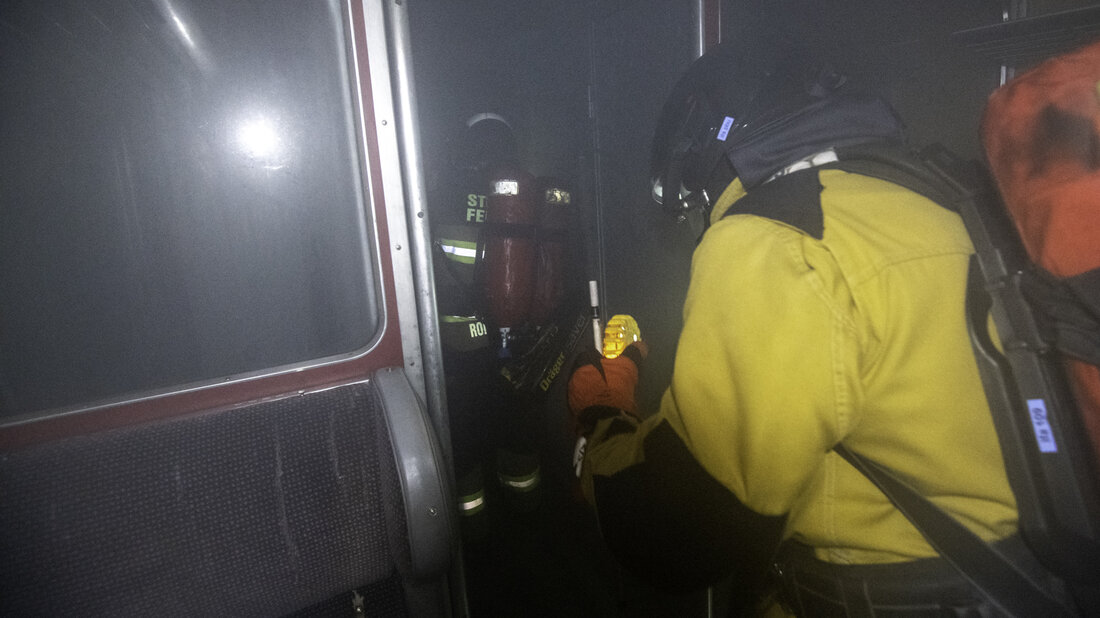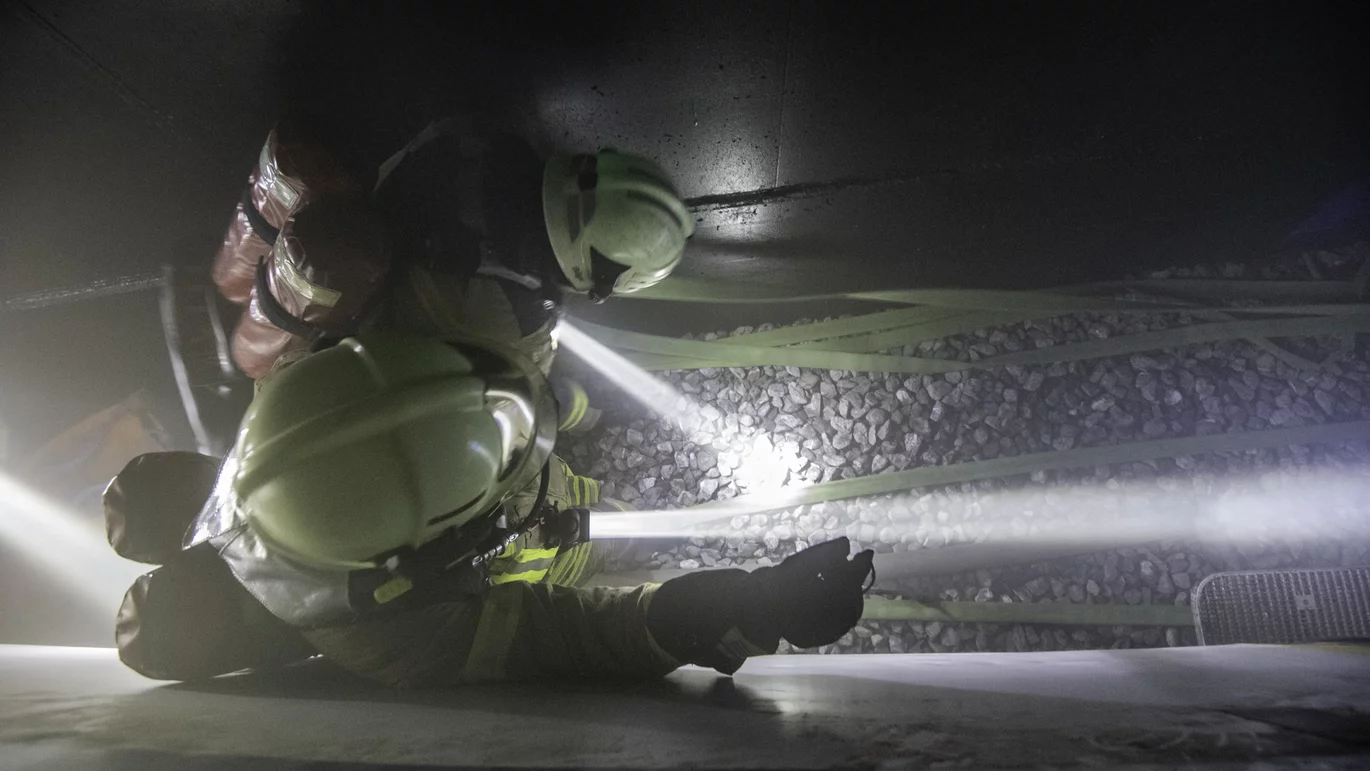During the International Fire Academy training operations, it became clear that the members of a search & rescue team can be coordinated in different ways. However, which variant is the best? The International Fire Academy's Didactics and Development Team has analysed the complex issues and now recommends that the safest course of action be taken as default: The entire search & rescue team, including the team leader, moves and works spatially as close together as possible.
First question: Location of the team leader?
The International Fire Academy's Railway Tunnel Firefighting Procedure recommends: «Always search the entire width of the tunnel tube, including the affected train. For this purpose, the following elements are deployed: one team of two, each on both sides next to the train, one team of two within the train, and possibly an additional team of two for the upper levels of double-decker cars. The search & rescue team leader coordinates the teams of two.» The question of how the team leader and the teams of two should position themselves in relation to each other was left open in writing. The Didactics and Development Team first discussed the variants outlined in the diagram below regarding the team leader's location.
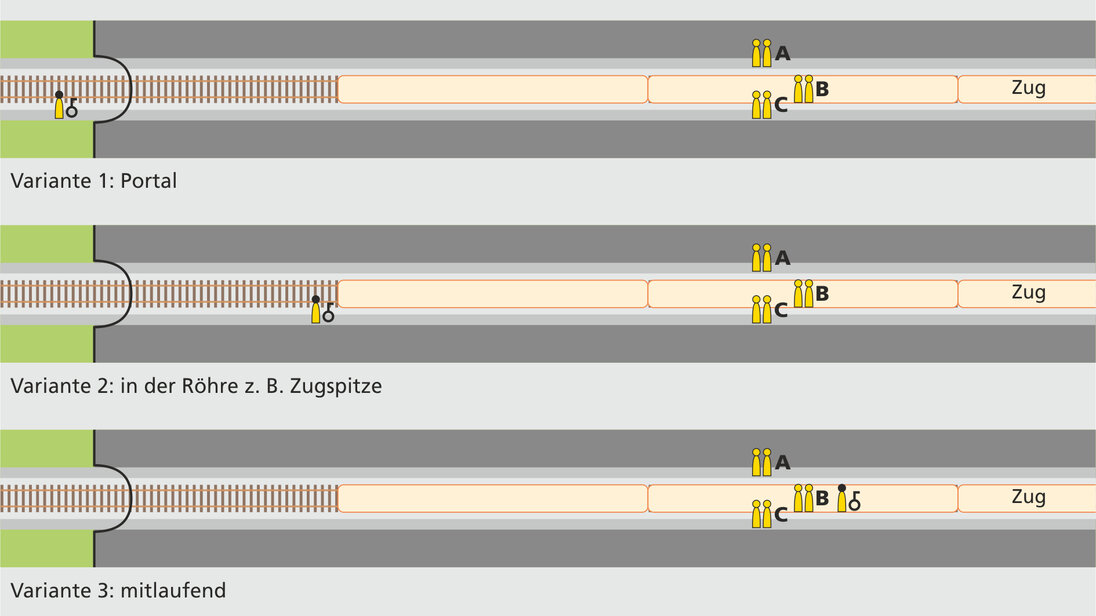
Variant 1, the team leader leads stationary from the portal or an emergency exit. Variant 2, the team leader goes into the tunnel but remains outside of the train, for example, at the head of the train. However, with these two variants, there is a risk that frequent enquiries will heavily burden radio traffic or that radio contact may even be lost altogether. Therefore, it is recommended that the team leader remains with the team of two in the train, as shown in variant 3.
Second question: Team cohesion?
The individual teams of two can progress at different speeds, e.g. because searching in the train takes more time than outside of the train. In order to find people in need of help as quickly as possible, it could therefore make sense to let the individual teams of two advance as fast as they can (cf. variant 4). With this approach, however, the search and rescue team tears apart, and the teams of two can no longer protect and support each other.
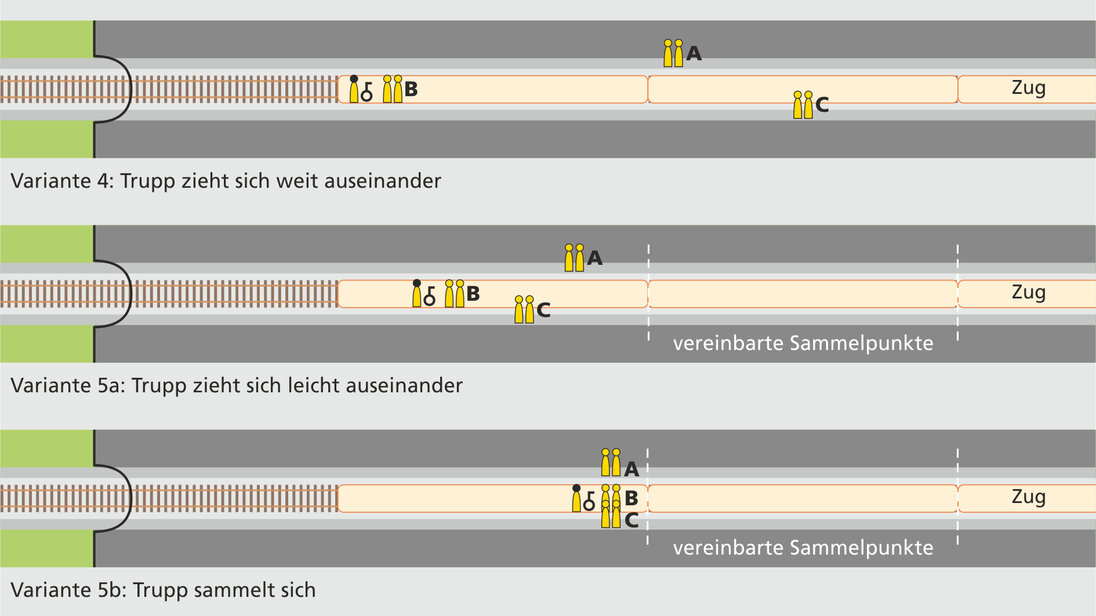
That is why the International Fire Academy recommends variant 5: The teams of two may have different speeds, as shown in variant 5a. However, as shown in variant 5b, they always meet again at previously defined meeting points, for example, at the end or at the last door of a passenger car.
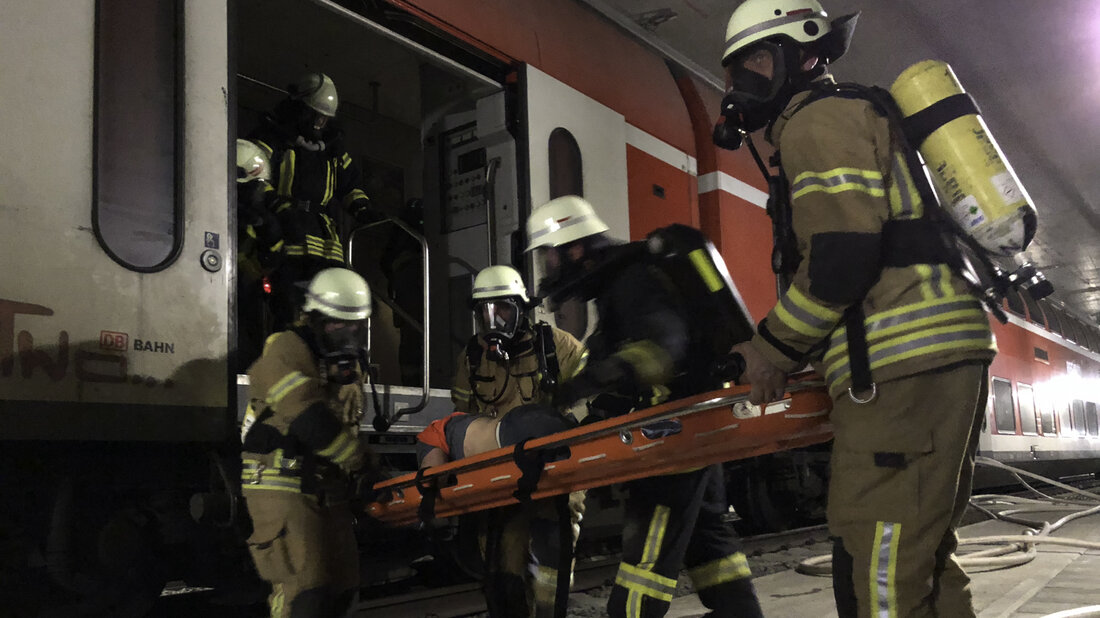
Safety is paramount
The operating conditions for search & rescue teams can be very different. In the worst case, the firefighters are exposed to very heavy smoke. In another case, there may be a clear view along the entire train. This concludes: Which approach is the best will always have to be decided on a situational basis. However, as the safety of the emergency personnel is paramount, the Didactics and Development Team started from the most unfavourable situation when formulating the engagement rules for search & rescue teams.
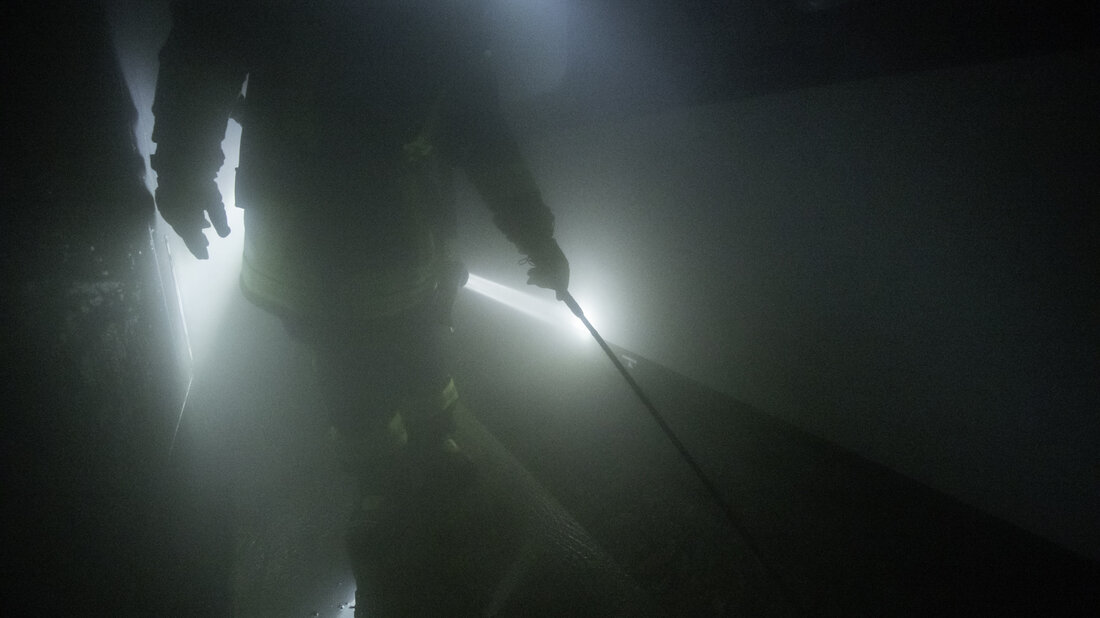
Rules of Engagement for search & rescue teams
Based on the considerations described above, the following rules of engagement for search and rescue in smoke have been added to the Railway Tunnel Firefighting Procedure:
- Principle: Safety comes before efficiency.
- All teams of two and the team leader stay close together.
- At different speeds of advance, the team meet at previously defined points, e.g. at the transition to the next railway car or the last door of the car.
If the situation permits (good visibility conditions, etc.), the teams of two outside the train can advance faster than those inside.
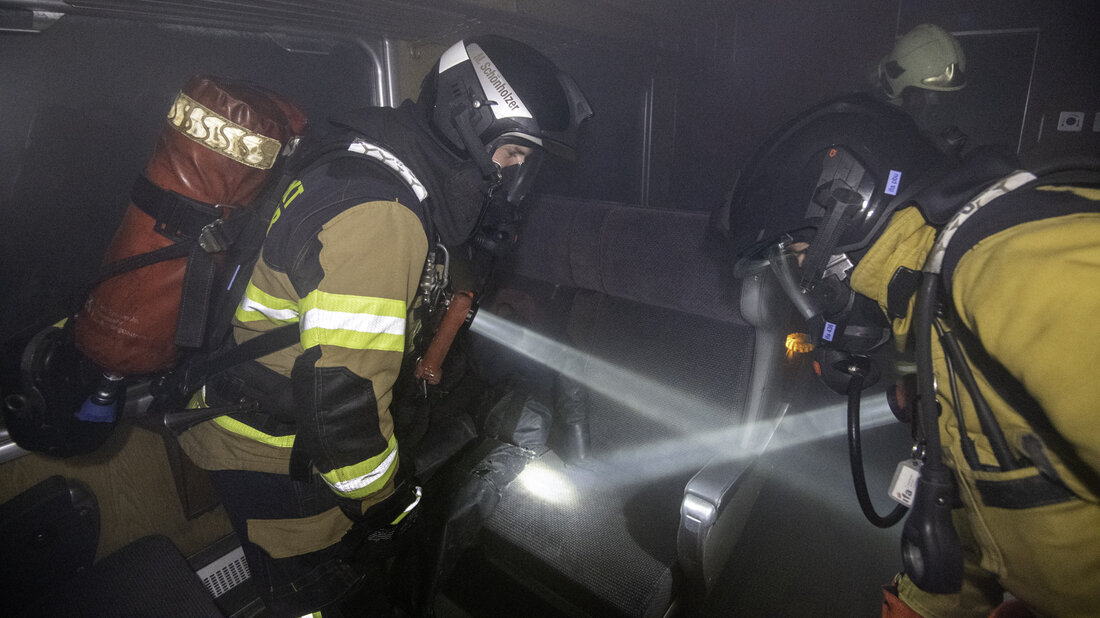
Viability must be proven
It remains to be seen whether these operational rules are viable for deployments because, fortunately, fires in railway tunnels are rare. Therefore, we do not have any reports on whether the approach we propose can also be applied in this way under real operating conditions and is actually helpful. Until then, all that remains is to practice this technique in training and, if necessary, to optimise it further. We are conceivable for related feedback from training and deployments of the fire services.
